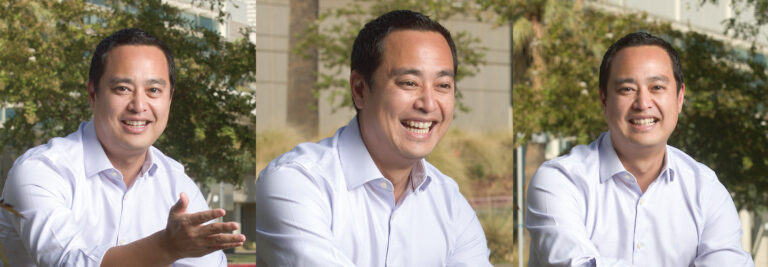
HEALTHTECH: Tell us more about the CIC and its distinctions from the Digital CoLab.
NAKAGAWA: The CIC embodies our vision for how academic medical centers can partner with industry to drive thought leadership and innovation.
Industry has always partnered with academic medical centers, but I think some of the overhead and bureaucracy has to do with intellectual property. What if we didn’t have to worry about IP and just focused on solving problems? The CIC is a platform for any health system, patient or clinician to be able to post problems that they see in health equity. From there, we work with them to brainstorm and prototype solutions, free from IP or budget constraints since those are often the barriers that can hinder innovation and collaboration.
We have many patients and clinicians with amazing ideas, but they don’t know who to go to or how to create technical specifications for an app or prototype. How do we remove barriers so they can just bring their expertise and ideas, and we can handle the rest? That type of model can drive a lot of untapped potential in healthcare to solve big problems.
HEALTHTECH: What does human-centered design mean for your organization?
NAKAGAWA: We define human-centered design as the practice of reframing the narrative around the person and experience instead of the technology. We prioritize understanding the problem or experience as deeply as possible. How do we think about innovation as human-first and experience-driven, with technology as just an enabler?
In medicine, this type of practice is especially difficult because we rely on expertise passed down through generations of training to make sure our patients get the best care possible. But for the practice of innovation, we want to take the opposite approach: We want to remove ourselves from our own expertise and challenge our unconscious biases, or at least be able to recognize that no matter what we do, we bring a certain amount of bias. If we can be more self-aware of our biases, we will naturally want to include other people in the equation. We try to approach everything with a “beginner’s mind.”
EXPLORE: The future of healthcare in the public cloud.
HEALTHTECH: What successes or failures have you noticed when structures to ensure DEI are or aren’t applied to a project?
NAKAGAWA: Unfortunately, I can’t give you good examples of success stories yet, but we’re very cognizant of two key fail points at the design and testing stages.
In the design stage, I don’t think we invest enough in understanding the problem. When it comes to innovation, we jump too quickly to figuring out what the solution is. When we look at reducing health disparities, a lot of time is required to unpack the root causes of those disparities. Being able to step back and recognize that this is not going to be a quick exercise — even just saying that out loud to the team at the beginning — is important. In medicine, we often need to respond quickly to situations, especially in the ICU or emergency department. In innovation and design, we have the luxury of taking our time to explore the problem and let curiosity guide us.
Another key fail point is in the testing stage. When you want to test your solution, it’s natural that you test with patients in proximity. For us, because we’ve had to deliver care to such a geographically and demographically diverse patient population, we are also putting systems in place to ensure that we’re always testing and validating with a diverse patient population. If you make that upfront investment, those solutions can scale a lot more in the long run.